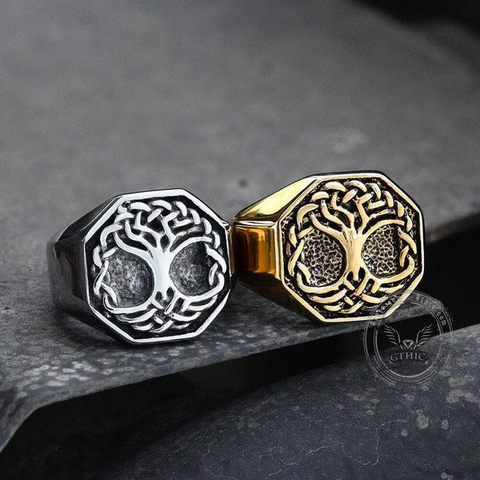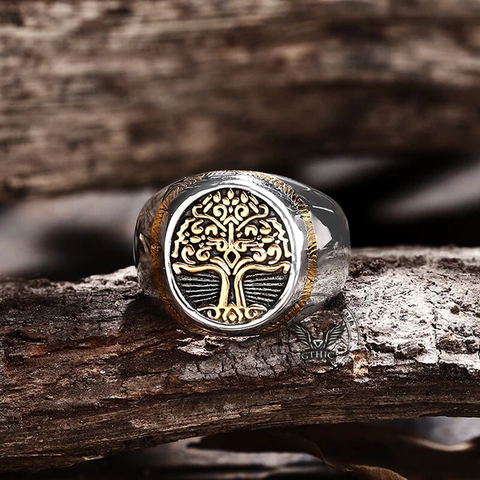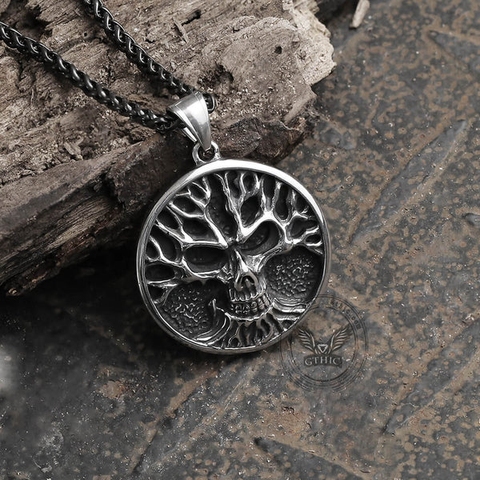The Tree of Life: An Exploration of its Meaning and Stunning Jewelry Designs
What is the Tree of Life
The Tree of Life is a concept and symbol that holds significant meaning in various cultures, religions, and mythologies throughout history. It is often depicted as a large, majestic tree with branches reaching into the sky, roots extending deep into the earth, and sometimes adorned with leaves, fruits, or other symbolic elements. The Tree of Life represents the interconnectedness of all life, the cyclical nature of existence, and the unity of the cosmos. It embodies the idea that all living beings are interconnected and share a common origin.

Introduction to the Significance of the Tree of Life in Various Cultures and Religions
The significance of the Tree of Life spans across numerous cultures and religions, holding profound meanings and symbolizing a range of concepts. Let us explore its significance in some key belief systems:
- Ancient Mythologies:
In Norse mythology, the Tree of Life, known as Yggdrasil, symbolizes the cosmic structure of the universe, with its roots reaching into the realms of the underworld and its branches extending into the heavens. It represents the interconnectedness of the different realms and serves as a source of wisdom and divine power.
In Egyptian mythology, the Tree of Life, often represented as the Persea tree, symbolizes the eternal cycle of life, death, and rebirth. It is associated with nourishment, regeneration, and the afterlife, providing sustenance and shelter to the deceased.
In Mesopotamian mythology, the Tree of Life, known as the "Sacred Tree," represents the divine order and the connection between heaven, earth, and the underworld. It is seen as a source of fertility, wisdom, and healing.
- Eastern Philosophies and Abrahamic Religions:
In Hinduism, the Tree of Life, known as the Kalpavriksha or Kalpataru, symbolizes the wish-fulfilling divine tree, representing abundance, prosperity, and spiritual fulfillment. It is associated with the concept of samsara, the cycle of birth, death, and rebirth.
In Buddhism, the Tree of Life is linked to the Bodhi tree, under which Gautama Buddha attained enlightenment. It signifies the path to enlightenment, spiritual awakening, and the realization of ultimate truth.
In Christianity, the Tree of Life is associated with the Garden of Eden and the Tree of Knowledge. It represents the eternal life offered through faith in Christ and serves as a symbol of spiritual nourishment and salvation.
In Islam, the Tree of Life is mentioned in the Qur'an, representing the blessed tree in Paradise that provides sustenance and eternal bliss to the righteous. It symbolizes the spiritual nourishment and rewards awaiting believers in the afterlife.
- Cultural Interpretations:
Celtic cultures view the Tree of Life, symbolized by the Celtic knotwork, as a connection between the earthly and spiritual realms. It embodies harmony, balance, and the interplay of forces in nature.
Native American cultures associate the Tree of Life with the interconnectedness of all living beings, serving as a symbol of unity, strength, and spiritual wisdom.
African cultures have diverse interpretations of the Tree of Life, often representing ancestral wisdom, community, and the cycle of life and death. It symbolizes the continuity of generations and the connection to the spiritual realm.
The Tree of Life's significance in these cultures and religions demonstrates its universal appeal as a symbol of interconnectedness, wisdom, spiritual nourishment, and the eternal cycle of life. It serves as a potent reminder of our place in the grand tapestry of existence and our eternal quest for meaning and spiritual fulfillment.
Meaningful Elements in Tree of Life Jewelry
Tree of Life jewelry often incorporates various elements that carry symbolic significance. These elements enhance the overall meaning and depth of the jewelry designs. Here are some of the meaningful elements commonly found in Tree of Life jewelry:
-
Roots: The roots of the Tree of Life represent grounding, stability, and connection to one's origins. They symbolize our roots, heritage, and the foundation upon which we build our lives. In Viking pendants, intricately designed roots can serve as a reminder of the importance of staying grounded and connected to our past.

-
Trunk: The trunk of the Tree of Life signifies strength, resilience, and growth. It represents the core of our being, our inner strength, and the ability to withstand challenges and adversity. The trunk in Viking rings’ designs often portrays the upward growth and expansion of life, reminding us of our own personal growth and journey.

-
Leaves: The leaves of the Tree of Life symbolize abundance, nourishment, and vitality. They represent the cycle of life, growth, and the flow of energy. Leaves in the Tree of Life rings’ designs can carry vibrant colors or intricate patterns, reflecting the beauty and diversity found in nature and symbolizing the richness of life's experiences.

-
Skull: Tree of Life jewelry may incorporate additional sacred symbols that hold personal or cultural significance. For example, the skull necklace pendant incorporating the Tree of Life creates a unique and distinctive finished product that blends contrasting elements. This fusion of symbols carries its own symbolic significance, representing the juxtaposition of life and death, growth and decay, and the interconnectedness of opposing forces.

-
Gemstones: Gemstones used in Tree of Life jewelry can carry their own symbolism, enhancing the overall significance of the piece. For instance, amethyst may represent spiritual wisdom, rose quartz can symbolize love and compassion, and turquoise may signify protection and healing. The choice of gemstones can align with the intentions and desired energies of the wearer.

By incorporating these meaningful elements, Tree of Life jewelry becomes more than just an accessory. It becomes a wearable symbol that serves as a reminder of our connection to nature, our personal growth, and the abundant and diverse experiences that make up our lives.
Conclusion
The Tree of Life holds profound significance in various cultures and religions, symbolizing the interconnectedness of all life, the cyclical nature of existence, and the unity of the cosmos. It embodies concepts such as wisdom, strength, abundance, and spiritual nourishment. It serves as a wearable symbol that reminds us of our connection to nature, our personal growth, and the richness of life's experiences. Whether it's a traditional depiction or a fusion with contrasting symbols like the skull, Tree of Life jewelry offers a visually captivating and spiritually meaningful way to explore and express the profound mysteries of existence.


